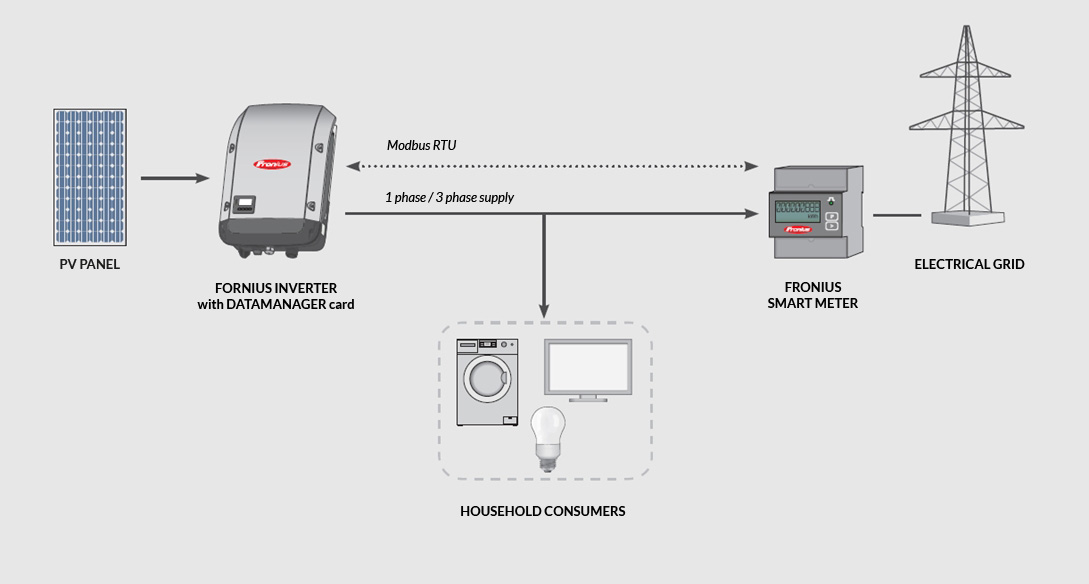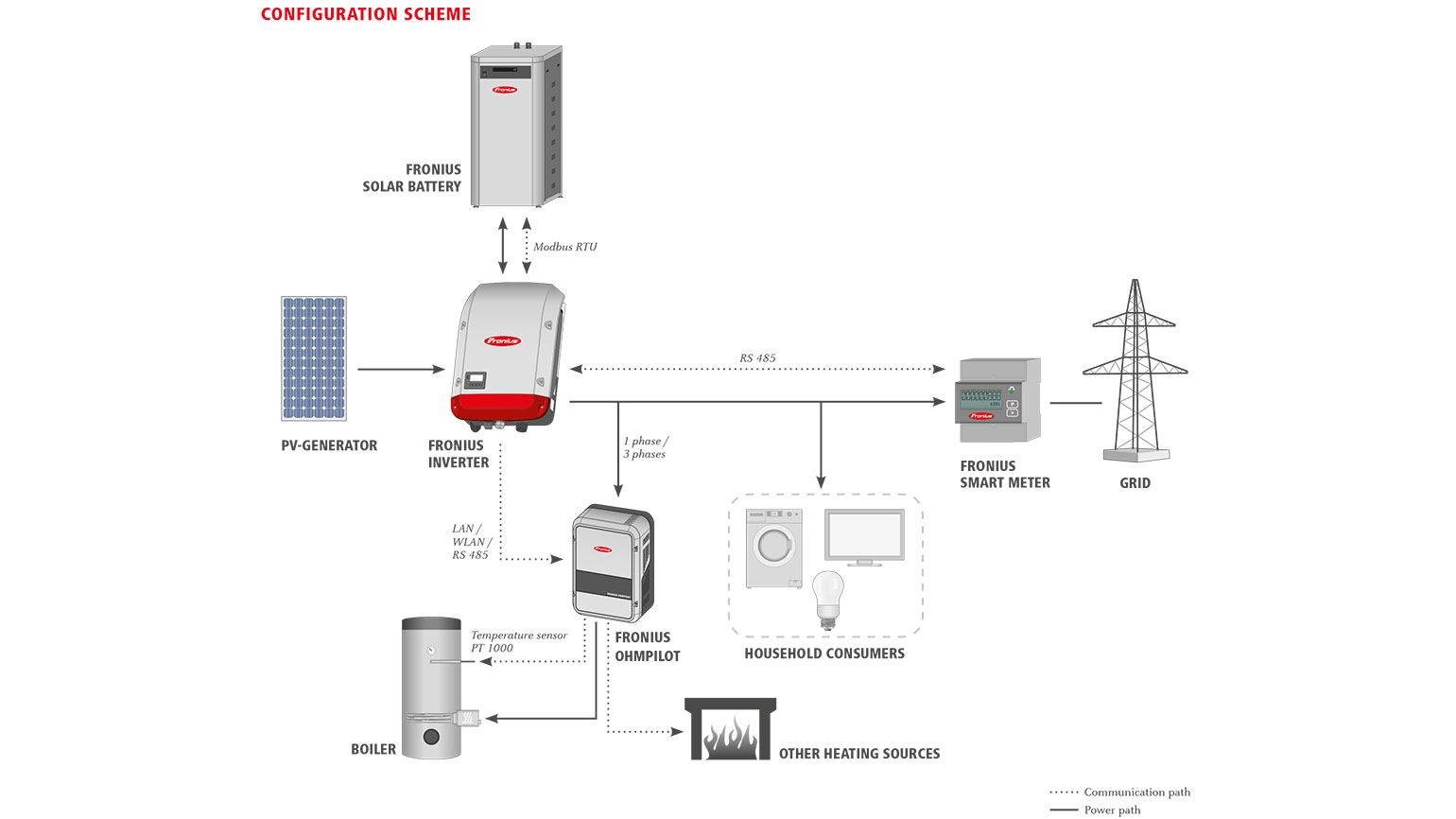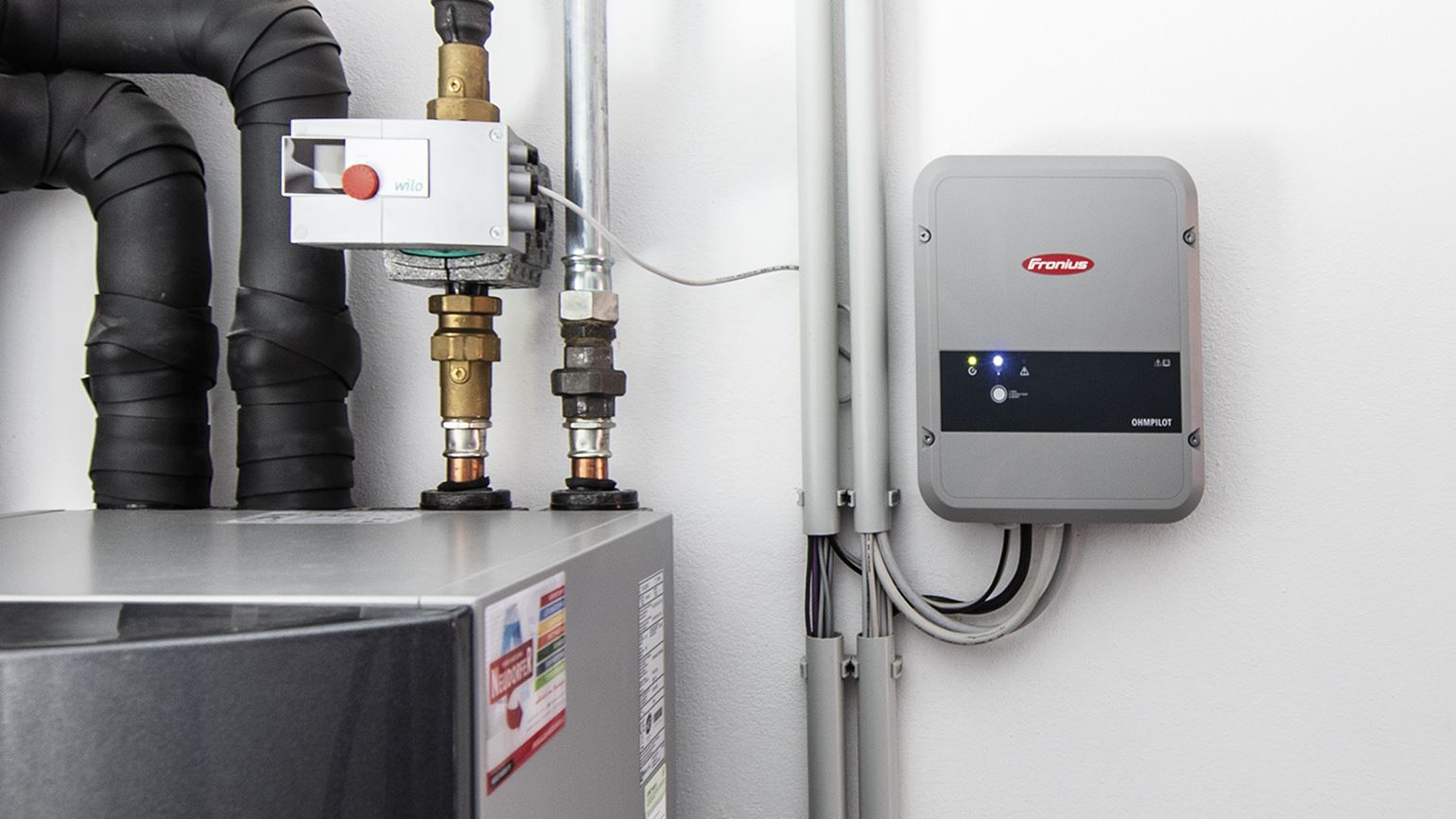In many cases, it is required that the energy produced by the PV system do not to enter the electrical grid. This can be done using an appropriate monitoring device (integrated into the inverter or external), and an electricity meter indicating the energy flow to the grid.
The solution by Fronius allows you to set a limit on the power fed into the grid (from -10 to 100%.). All inverters from the SnapINverters series (except Symo Hybrid) in combination with the Fronius Smart Meter (or S0) electricity meter enable this functionality. Of course, the inverter must be equipped with an external or built-in Datamanager card.
Photo: Fronius Smart Meter, www.fronius.com

Photo: Fronius.com
OPTIMIZATION OF YOUR CONSUMPTION WITH SMART, SMOOTH ADJUSTMENT OF HEAT SOURCES
Fronius Ohmpilot is a consumption regulator designed to use excess solar power to heat water. Thanks to the continuously adjustable regulation from 0 to 9 kW, surplus PV current can be put to highly efficient use and fed to the consumers in the household. Fronius Ohmpilot is primarily used to intelligently control heating elements for providing hot water in boilers and buffer storage tanks. It can also be used, for example, for infrared heating or towel radiators. Solar power can thus provide a family home with average levels of water consumption with most of their hot water during spring and summer. The result is maximum self-consumption, a reduction in the household’s CO2 emissions and less wear on the building’s main heating system during the summer months.
Photo: Fronius-Ohmpilot, Fronius.com
We offer heating elements for use with Fronius OHMPILOT controllers - see on the page of heating elements for the photovoltaic system

Photo: Fronius.com

Photo: CWU Fronius Ohmpilot System, Fronius.com

Solare Datensysteme GmbH is one of the world's most important companies in the field of monitoring solar systems for both photovoltaic system operators and for installers. The company is located in the German city of Binsdorf. Solare Datensysteme GmbH is part of Thomas Preuhs holding GmbH
Since 2005, the company has been developing the "Solar-Log™" product, which is currently available in many European countries. Since mid-2010, the company has also been represented on the US market.
Photo: Solar-log.com
The speciality of the company is the PV monitoring systems that are independent of the inverters, which consists of the Solar-Log™ monitoring module and the Solar-Log™ WEB analytical platform.
In addition to monitoring equipment, Solare Datensysteme GmbH offers a number of products that complement and provide effective support to users and installers of PV systems worldwide.
Photo: Solar-log.com
| Downloads |  |

The charge regulator in an off-grid PV system is a device necessary for the proper functioning of the whole system. It is the link between the photovoltaic panels and the battery and consumers.
Photo: Steca.com
The charge regulator (B) ensures that parameters such as the current and voltage at the photovoltaic panel output (A) are converted so that the battery (C) is charged with a current and voltage that are suitable for it. If this system does not include the regulator, the battery life will be significantly reduced, and the battery will be completely damaged (it is the frequent charging of the batteries directly from the PV panels that causes the battery to fail quickly!).
In addition, the regulator ensures that the energy transferred from the consumers (E) to the battery is used rationally. This means that when the battery is discharged below a safe level, the regulator disconnects the consumers to prevent overdischarging of the battery and reduction of its life.
Charge regulators produced by Steca, a German electronics manufacturer, ensure the highest quality, low purchase costs and a long service life. Both their state-of-the-art execution and precision of work make them the ideal solution for off-grid PV systems operating around the world.
Photo: Steca.com
| List of symbols used in the technical specifications of the products | |
 |
The device is particularly suitable for domestic solar systems. |
 |
The device is particularly suitable for use in mobile systems and campsites. |
 |
The device is suitable for night-time lighting systems. |
 |
Maximum input power from connected solar modules. |
 |
The device is suitable for systems with a high performance class or for powering entire settlements. |
 |
The device is specially designed for all telecommunications applications. |
 |
The device calculates the battery charge level using the AtonIC processor. |
 |
The device features a digital display that shows various system information. |
 |
The device is especially protected against moisture and corrosion. |
 |
The device transmits data using wires, a phone, or wirelessly. |
Register: District Court of the city of Szczecin
17th Commercial Division KRS 0000004595
Share capital: PLN 800,000 – paid in full
Working hours of sales department: 7:00 – 15:00
Warehouse opening hours: 7:00 – 15:00
NIP 852-22-99-864, REGON 812026229
Account number: PLN 47 1020 4795 0000 9702 0177 4603
Copyright © SELFA GE S.A.
All rights reserved.